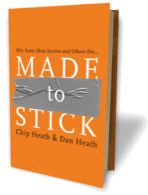Some word-of-mouth on "Word of Mouth Marketing"
I’ve been on hiatus from online for most of the past two weeks - a bit of needed vacation. I didn’t quite spend the time the way I had planned, but I think I spent it the right way. I had planned to read a couple of books, stay on top of my blog, catch up on RSS feeds that I’d fallen behind on, and work on some longer range personal objectives. Well, I read one book. Beyond that, I frankly just relaxed and enjoyed the time with family and friends. Good for me!! Not sure why I thought I could or should try to do all that other stuff while on vacation!
As I prepare to immerse tomorrow in my day job, I’m anxious to catch up on what I missed and get on with planning for what looks like a very busy fall schedule.
The one book I did read was a good one. Earlier this year I joined the Word of Mouth Marketing Association. I certainly didn’t see myself as a marketer, but I felt it would be a good way to connect with some industry peers focused on similar issues involving social media. Well, it was - and I certainly recommend it. I have met many great thinkers and experts on the topic of WOM over the past several months. I’ve been particularly taken by the convergence social media is driving between marketing, customer service, online support and product feedback functions - driving connections across these silos should be a top priority for any company that wants to continue to have long term success.
A friend introduced me to Andy Sernovitz who I’ve had the pleasure of talking with now on several occasions. Andy wrote an excellent book called Word of Mouth Marketing: How Smart Companies get People Talking. Andy has been a great contact for me and I certainly owe him a personal thanks for the conversations, but also want to recommend this book to anyone looking for smart, easy to follow guidance on how to implement Word of Mouth in your marketing strategy.
This is the book I wish I had read 3-4 years ago (though it wasn’t out then:)). I can certainly see how this book would have changed how I thought about and implemented the programs, practices and internal negotiations I’ve been responsible for in recent years. Andy brings nice structure to action planning through the 5 Ts:
- Talkers: Find the people talking about you
- Topics: Give people a reason to talk
- Tools: Help the message spread faster and farther
- Taking part: Join the conversation
- Tracking: Measure and understand what people are saying
Now, here I am "Word-of-Mouthing" on the book - uh, hmmm - nice job Andy.
Hope to see you in November at the Word of Mouth Marketing Summit where I get to present this year!
Sean
Popularity: 16% [?]
Share This
posted in Book Reviews, Word of Mouth | 4 Comments

 My book pile has grown faster than I can deplete it. I’ve done what I rarely do…started reading multiple books at the same time. Some people can do that, it’s not for me.
My book pile has grown faster than I can deplete it. I’ve done what I rarely do…started reading multiple books at the same time. Some people can do that, it’s not for me.
